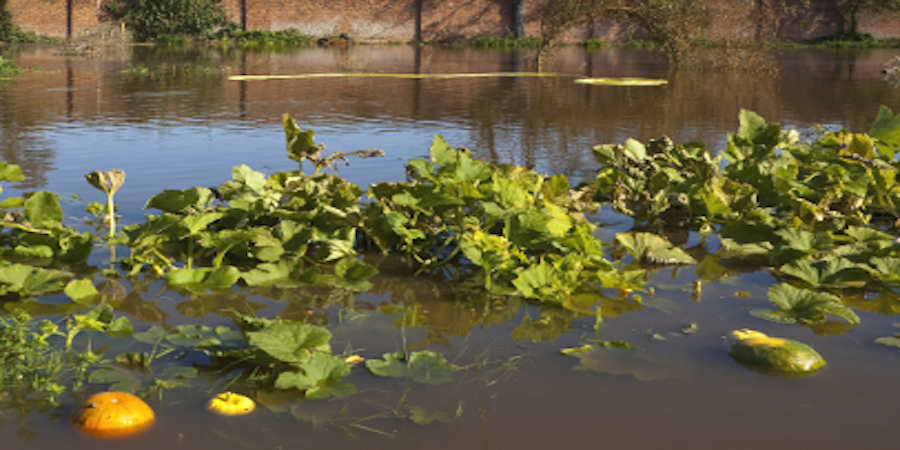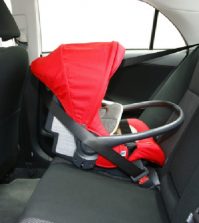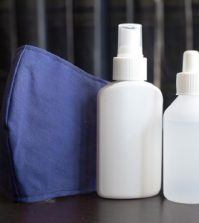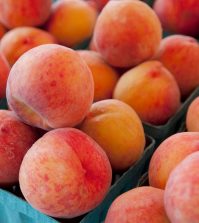- Study Says Most Parents Don’t Use Car Seats In Ride Share Vehicles Like Uber
- This 12-Year-Old Boy Is A Sophomore Aerospace Engineering Major!
- Fire Safety Experts Warn Of Hand Sanitizer Danger After A Mom and Kids Escape House Fire
- Recall Alert: Peaches May Be The Cause Of Salmonella Outbreak, 68 People Ill
- Summer Vacation In The Days Of COVID: Tips To Stay Safe
- How To Safely Grocery Shop During The Coronavirus Pandemic
- Michigan Teen With Vape-Related Illness Undergoes Double Lung Transplant
- Teen Kicks Off Anti-Vaping Campaign From Hospital Bed
- Teenager Receives Life Sentence For Strangling Sister To Death Over A Wi-Fi Password
- Toddler Falls To Death From 11th Deck of Cruise Ship
Irma Floodwater Pathogens Can’t Be Washed Off Fresh Produce


Except for California, the state of Florida produces more fresh fruits and vegetables than any other state.
It is the top tomato state in the country.
Like with backyard gardens, Hurricane Irma has turned many of Florida’s commercial fruit and vegetable fields into patches of pathogens which cannot be washed away. Experts on fresh produce, such as the Food and Drug Administration to county extension agents, are warning of the dangers of eating fresh produce that has been touched by floodwaters.
“Fresh fruits and vegetables that have been inundated by flood waters cannot be adequately cleaned and should be destroyed,” according to the FDA.
“There is no practical method of reconditioning the edible portion of a crop that will provide a reasonable assurance of human food safety. Therefore, the FDA recommends that these crops be disposed of in a manner that ensures they are kept separate from crops that have not been flood damaged to avoid adulterating ‘clean’ crops.”
Floodwaters contain a combination of pathogens and parasites, including E. coli, Salmonella, typhoid and cholera.
Food safety tips from FDA for those who are working on recovering from Hurricanes Harvey and Irma include:
- Do not eat any food that may have come into contact with flood water.
- Discard any food and beverage that is not in a waterproof container if there is any chance that it has come into contact with flood water.
- Food containers that are waterproof include undamaged, commercially prepared foods in all-metal cans and “retort pouches” — like flexible, shelf-stable juice or seafood pouches.
- Food containers that are not waterproof include those with screw-caps, snap lids, pull tops, and crimped caps.
- Also discard cardboard juice/milk/baby formula boxes and home canned foods if they have come in contact with flood water, because they cannot be effectively cleaned and sanitized.
- Discard any food in damaged cans. Damaged cans are those with swelling, leakage, punctures, holes, fractures, extensive deep rusting, or crushing/denting that is severe enough to prevent normal stacking or opening with a manual, wheel-type can opener.
- Thoroughly wash metal pans, ceramic dishes, and utensils — including can openers — with soap and water, using hot water if available. Rinse and then sanitize them by boiling in clean water or immersing them for 15 minutes in a solution of 1 tablespoon of unscented, liquid chlorine bleach per gallon of drinking water — or the cleanest, clearest water available.
- Thoroughly wash countertops with soap and water, using hot water if available. Rinse and then sanitize by applying a solution of 1 tablespoon of unscented, liquid chlorine bleach per gallon of drinking water — or the cleanest, clearest water available. Allow to air dry.
- Saving undamaged food packages
Undamaged, commercially prepared foods in all-metal cans and “retort pouches” — like flexible, shelf-stable juice or seafood pouches — can be saved if you follow this procedure. However public health officials say the golden rule of food safety should be the primary rule: When in doubt, throw it out.
Food in reconditioned cans or pouches should also be used as soon as possible after following these steps:
1. Remove the labels, if they are the removable kind, since they can harbor dirt and bacteria.
2. Brush or wipe away any dirt or silt.
3. Thoroughly wash the cans or retort pouches with soap and water, using hot water if it is available.
4. Rinse the cans or retort pouches with water that is safe for drinking, if available, since dirt or residual soap will reduce the effectiveness of chlorine sanitation.
5. Sanitize cans and retort pouches by immersion in one of the two following ways:
- Place in water and allow the water to come to a boil and continue boiling for 2 minutes.
- Place in a freshly made solution consisting of 1 tablespoon of unscented liquid chlorine bleach per gallon of drinking water — or the cleanest, clearest water available — for 15 minutes.
6. Air dry cans or retort pouches for a minimum of one hour before opening or storing.
7. If the labels were removable, then re-label your cans or retort pouches, including the expiration date, with a permanent marking pen.
Baby formula
For infants, try to use prepared, canned baby formula that requires no added water. Otherwise, dilute any concentrated baby formula in reconditioned, all-metal containers with clean drinking water.









0 comments